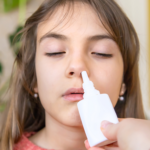Asthma is one of the most common chronic conditions in children, affecting their ability to breathe easily and enjoy daily activities. Childhood asthma, which often begins in early years, can vary in severity and may persist into adulthood. In this blog, we’ll explore the causes, symptoms, and effective strategies for managing childhood asthma to help kids lead healthier, more active lives.
What is Childhood Asthma?
Childhood asthma is a condition in which the airways become inflamed, narrow, and produce extra mucus, making it difficult for a child to breathe. This condition can be triggered by various factors, including allergens, respiratory infections, and environmental irritants. While asthma in children shares similarities with adult asthma, managing it can be more challenging due to their developing bodies and the impact on their day-to-day lives.
Causes of Childhood Asthma
The exact cause of asthma is not fully understood, but several factors contribute to its development, including:
- Genetics: A family history of asthma or allergies increases a child’s risk.
- Environmental Triggers: Exposure to allergens such as pollen, mold, pet dander, or dust mites can provoke asthma symptoms.
- Respiratory Infections: Viral infections like colds and flu are common asthma triggers in children.
- Air Pollution: Exposure to smoke, strong odors, or pollution can irritate sensitive airways.
- Exercise: Physical activity, particularly in cold air, can trigger asthma symptoms in some children.
- Weather Changes: Sudden temperature or humidity changes can exacerbate symptoms.
Symptoms of Childhood Asthma
Asthma symptoms in children can range from mild to severe and may include:
- Wheezing: A whistling sound when breathing, particularly during exhalation.
- Coughing: Persistent or frequent coughing, especially at night or during physical activity.
- Shortness of Breath: Difficulty breathing, often leading to fatigue or reduced activity.
- Chest Tightness: A sensation of pressure or discomfort in the chest.
- Frequent Respiratory Infections: Asthma symptoms may worsen with colds or the flu.
It’s important to note that these symptoms can vary and may not always indicate asthma. A proper diagnosis is essential.
Diagnosing Childhood Asthma
Diagnosing asthma in children, especially younger ones, can be challenging as symptoms may overlap with other respiratory conditions. A healthcare provider may:
- Review Medical History: Ask about family history, symptoms, and potential triggers.
- Perform a Physical Exam: Check for signs of wheezing or other respiratory issues.
- Conduct Lung Function Tests: Spirometry or peak flow monitoring may be used for older children to assess lung capacity and airflow.
- Conduct Allergy Testing: Identify potential allergens contributing to symptoms.
Managing Childhood Asthma
While asthma cannot be cured, it can be effectively managed to reduce symptoms and prevent flare-ups. Here are some key strategies:
1. Medications
- Quick-Relief Inhalers: Also known as rescue inhalers, these provide immediate relief during asthma attacks.
- Controller Medications: Daily inhaled corticosteroids or leukotriene modifiers help reduce inflammation and prevent symptoms.
- Allergy Medications: Antihistamines or allergy shots (immunotherapy) can reduce sensitivity to allergens.
2. Avoiding Triggers
- Minimize Allergen Exposure: Use air purifiers, wash bedding regularly, and keep pets out of bedrooms.
- Reduce Irritants: Avoid smoking near children and minimize exposure to strong odors or fumes.
- Monitor Air Quality: Check pollution levels and pollen counts before outdoor activities.
3. Establishing an Asthma Action Plan
Work with your child’s healthcare provider to create a personalized asthma action plan. This plan should outline:
- Daily management strategies.
- Instructions for using medications.
- Steps to take during an asthma attack.
- Emergency contact information.
4. Encouraging Healthy Habits
- Regular Exercise: Engage in asthma-friendly activities like swimming, walking, or yoga.
- Balanced Diet: Provide nutrient-rich foods to support overall health.
- Stay Hydrated: Drinking water helps keep mucus thin and airways clear.
- Vaccinations: Ensure your child receives annual flu shots and other necessary vaccines.
Recognizing Asthma Emergencies
While most asthma symptoms can be managed at home, certain situations require immediate medical attention. Seek emergency care if your child:
- Has difficulty speaking or completing sentences due to shortness of breath.
- Uses their rescue inhaler with no relief.
- Experiences severe chest tightness or wheezing.
- Has bluish lips or fingernails, indicating low oxygen levels.
Supporting Children with Asthma
Managing childhood asthma goes beyond medical treatment. Emotional support and education are crucial for helping kids cope with their condition. Here’s how you can help:
- Educate Your Child: Teach them about asthma, triggers, and the importance of following their action plan.
- Empower Them: Encourage your child to speak up about their symptoms and inform teachers or caregivers about their condition.
- Connect with Support Groups: Join communities like Asthma Friend to share experiences, tips, and support with other families.
Conclusion
Childhood asthma can be challenging, but with the right approach, it’s possible to manage symptoms and provide children with a high quality of life. By identifying triggers, adhering to treatment plans, and fostering a supportive environment, you can help your child thrive. Remember, you’re not alone in this journey, resources and support networks like Asthma Friend are available to guide you every step of the way.












